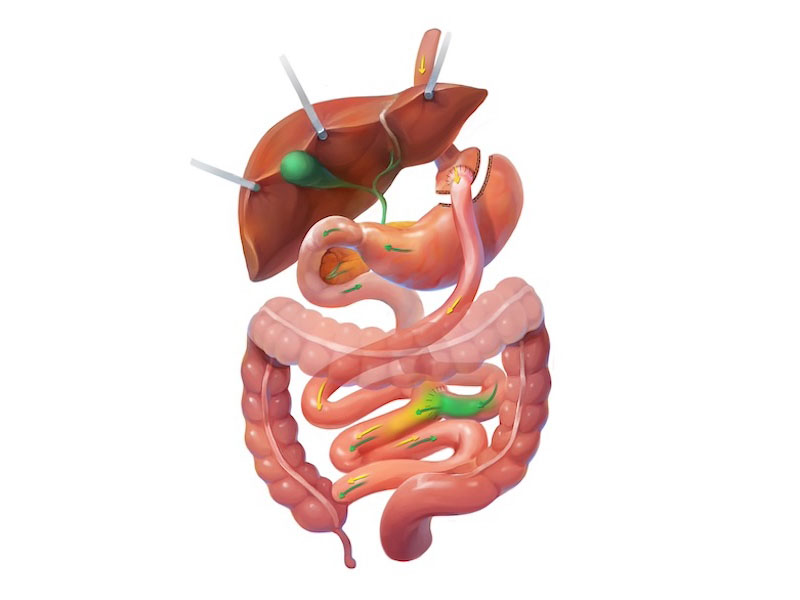
A gold-standard procedure suited to those with type-2 diabetes and reflux
The gastric bypass was first performed several decades ago and has proven to be one of the most effective weight loss surgery procedures, both in terms of weight loss potential and the potential to improve or resolve many of the diseases associated with morbid obesity.
The gastric bypass is performed minimally invasively rather than with the traditional, single, large incision of decades past. Four or five small, ½ to 1-inch incisions are made in the abdomen through which specially made medical devices are passed, including a laparoscope or high-definition camera. Today, virtually all our gastric bypass procedures are performed robotically, utilizing advanced technology to enhance outcomes, minimize pain, reduce the risk of complications, and shorten hospital stays.

The gastric bypass is a two-phase procedure that requires approximately 1 to 1.5 hours of operating time. First, the surgeon cuts away around 85% of the stomach pouch. What remains is about the size of a golf ball and holds very little food. At the edges of the stomach, a double staple line prevents the leakage of stomach fluid into the abdomen. Unlike the gastric sleeve, the portion of the stomach that is cut away remains in the gut; however, it no longer receives food.
During the second phase of the procedure, a portion of the small intestine is bypassed, resulting in a reduced surface area within the intestine for calorie absorption. The remaining intestinal portion is then attached to the new, smaller stomach pouch, and the surgeon creates an artificial stoma, or valve, between the stomach and small intestine.
Gastric bypass is one of the most effective bariatric procedures, offering patients excellent weight loss potential. On average, about 80% of excess body weight is lost. Many diseases associated with morbid obesity are also improved or eliminated. One of the most significant benefits of gastric bypass is its effect on type 2 diabetes. Many patients find that they go into remission from diabetes within days or weeks of surgery, even before they have lost a significant amount of weight. Research indicates that alterations to the small intestine appear to reset gut bacteria in the body, which significantly impacts insulin resistance. Of course, it is essential to remember that patient results will vary based on the willingness and ability to follow the prescribed post-operative lifestyle recommendations.
Due to the procedure’s minimally invasive nature, patients will spend less time recovering than they would for a traditional open procedure. Patients will spend one to two nights in the hospital under evaluation. Long-term, patients can typically return to work within 4 to 6 weeks, provided their job does not require heavy lifting or strenuous activity. Patients should refrain from lifting heavy objects until they have been cleared.
To learn about gastric bypass surgery and determine if it may be the right option for you, we encourage you to contact our office to schedule a consultation with Dr. Ghanem.